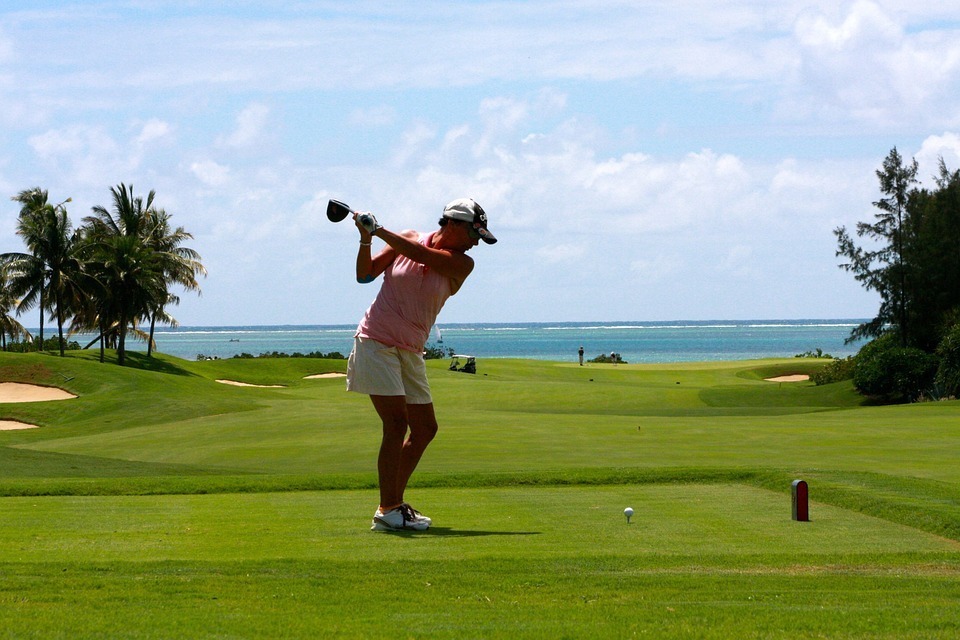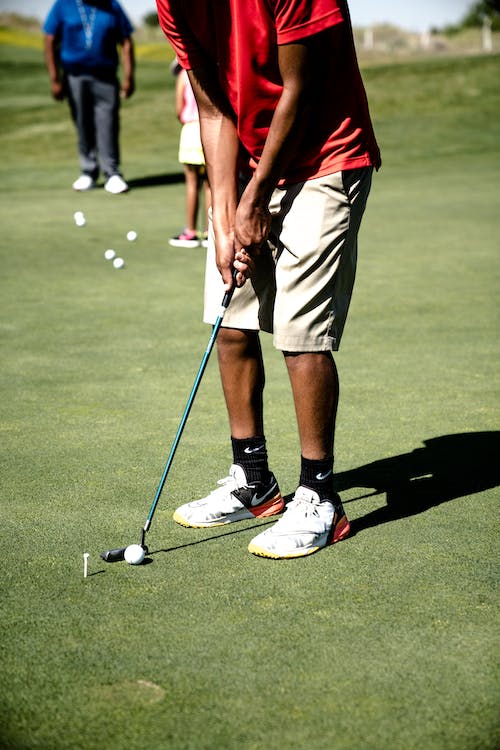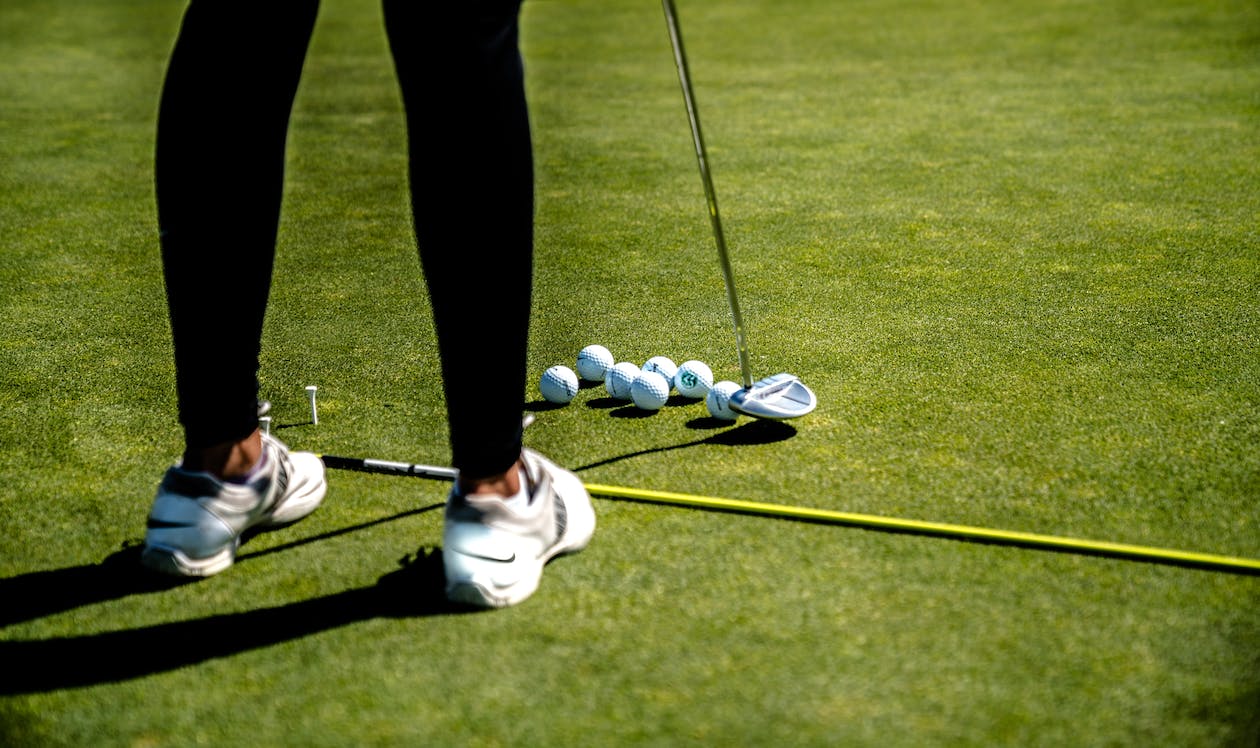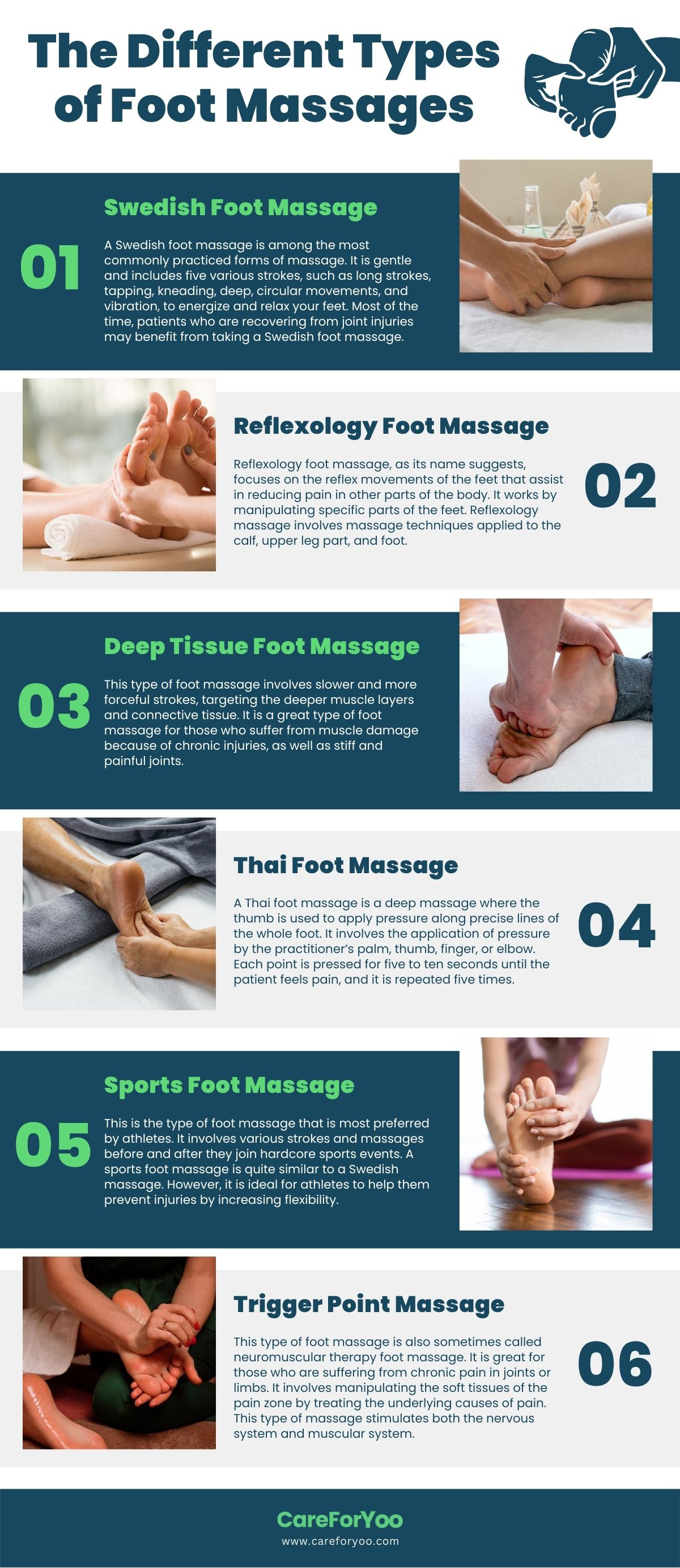Golf is one of the most beloved sports and requires skill, endurance, and protection for the body. It is a great way to stay physically active and have fun with friends or colleagues.
However, it also poses a risk of injuries that can be disruptive to your game. While you are out on the course, you are constantly moving back and forth, changing direction, and adjusting your weight throughout the game. Golfers need protection for hands, arms, and back, but feet and ankles are the ones usually left unprotected. Whether you’re swinging, walking, or just standing, your feet and ankles are constantly in motion and exposed to the elements.
Fortunately, there are several steps you can take to reduce the likelihood of getting injured when golfing. In this blog post, we will discuss the primary causes of ankle and foot injuries on the golf course, as well as preventive measures you can take to safeguard your ankles and feet.
Common Causes of Ankle and Foot Injuries on the Golf Course
Golf is about coordination, agility, and strength. Here is an interesting fact about golf: it is the only sport that has been played on the moon.
But did you know that the movements and equipment necessary to play it can put a lot of stress on your feet and ankles? When not properly managed, these injuries can make it difficult for you to continue playing. Here are some common causes of ankle and foot related injuries on the golf course:
Poor Positioning and Form
Poor form is one of the main contributors to ankle and foot injuries among golfers. Awkward pivoting or applying excessive force on the lower limbs during a swing may put unnecessary strain on your ankles and feet. When swinging a golf club, it is important that you consciously maintain a proper form and technique, which helps reduce the risk of an injury.
Poor Fitting Shoes
Another factor that can contribute to ankle and foot injuries when playing golf is the poor choice of shoes. Wearing the wrong type of shoes can lead to poor foot positioning and irritation. Footwear without adequate grip and cushioning can lead to slips and falls. Your shoes should provide the right level of support and should be comfortable enough to keep on for long golfing sessions.
Undiagnosed or Pre-existing Injury
An injury can aggravate itself during a golf game if left unchecked. Even if it is partially healed, the repetitive movement of swinging a club can exacerbate it. If you have any existing conditions, such as arthritis or tendonitis, you should seek out medical advice to address them before attempting to golf. Plus, if you are already recovering from an injury, make sure it has fully healed before taking a swing.
Ways To Prevent Ankle and Foot Injury During Golf
Golf is a physically demanding sport. It is important to take precautions to protect your ankles and feet while playing, otherwise injuries ranging from minor sprains to serious accidents can quickly happen. In this section, we will cover some precautionary measures to prevent ankle and feet injuries.
Wear Appropriate Footwear and Socks
The most important aspect of keeping your ankles and feet protected on the golf course is choosing the right footwear. The socks and shoes you wear must be appropriate with the conditions you are playing in.
Shoes
Shoes that provide adequate support and traction are the key for keeping the feet and ankles safe. They should not only fit you well, but also provide adequate comfort and support as you move around the course. Having golf spikes is also important as they provide grip and stability when making contact with the ground during a swing.
Choose a pair of specialist golf shoes because they are designed to offer the stability, grip, traction and protection from shocks. These have a cushioning inside that helps absorb some of the shock from walking across the course.
It is also important that your footwear is suited for the terrain of the course you are playing on. For example, if you are playing a course in wet conditions then you will need waterproof shoes with good grip. Likewise, if your golfing course has long grass then you will need shoes with thicker spikes for proper grip.
Socks
We also recommend wearing breathable, high-quality socks for additional support and protection. Choose a moisture-wicking pair that provides cushioning, support, and ventilation to keep your feet dry without rubbing against your skin. Merino wool socks are a good option, but you might also want to consider socks made of synthetic materials.
Warm Up Before the Game
Before teeing off, it is important to warm up your body muscles to prevent injury. When you get out of your cart, don’t step up to your first tee shot right away. Instead take the time to prepare yourself. A proper warm up can include stretching exercises specifically aimed at the lower body and some other exercises including:
Lower Body Warm Up
One way to warm up before beginning a round of golf is to perform several minutes of light jogging or walking. Additionally, pogo jumps or side lunge jumps are great exercises for warming up the lower body muscles before playing golf. Studies have shown that engaging in dynamic movements, such as jumping jacks, hop-over drills or even just walking briskly for 10 minutes, can help improve circulation in your legs prior to a game.
You can also perform squats or walking lunges to loosen your muscles. Start with a hip hinged backward (imitate sitting back on a chair). Now align your knees with your second toe and straighten your feet. Perform two sets of ten repetitions. Make sure your feet don’t turn out or your knees pinch in or travel beyond your toes. If you want to attempt walking lunges, perform them with the same principles.
Calf Stretch
Calf stretches is another way to warm up. It help increase flexibility in the ankle joint which can help prevent any pain during or after the round of golf. To do a calf stretch, step forward onto one foot while keeping your back leg straight. Now slowly drop the heel of your back foot onto the ground until you feel a stretch in the calf muscles of your back leg. Hold the stretch for 10 to 15 seconds before repeating on your other foot. Perform three reps for each leg.
Ankle Circles
Dynamic stretches such as ankle circles or leg swings can also help loosen up the joints and prepare the body for movement. You can easily do ankle circles in a sitting position. Sit down on a chair, bring your ankle up and start turning it around in circles. Slowly rotate it to the left first, and then to the right.
An easy way of performing ankle circles is to draw the alphabets A to Z in the air with your foot. Let your big toe take the lead. This exercise is very helpful in loosening your ankles. It is important to keep your movements small and focused. Be sure to move only your ankle, not the entire leg.
Practice and Rotation
Good technique is essential when it comes to protecting your ankles on the course. Practice proper rotation when swinging your club to hit the ball to reduce the risk of injury. This means turning your hips with each swing so that you’re not putting too much stress on one ankle or foot repeatedly throughout the game. Instead, alternate between left and right sides when swinging so that both sides get an even amount of work out during playtime.
Proper rotation of the ankles during a swing will allow for better balance and prevent excess strain on the joints. It involves turning your hips in line with your shoulders while maintaining a good connection between your arms, club head and feet throughout the downswing.
If you want to achieve maximum power using minimum effort, practice developing consistent muscle memory on your backswing so you don’t lose speed or accuracy during the shot.
Avoid Overswinging
Hyperextension of any joint can lead to pain or injury. Overswinging in golf puts extra strain on your ankles and feet, which can lead to swelling or overuse injuries like tendonitis or shin splints. By controlling your swing and keeping a consistent motion throughout, you will reduce any potential risks of injury.
Keep a Firm Contact With the Ground
When playing golf, it’s important to keep a firm contact with the ground to maintain stability throughout a swing. Allowing your feet to slip off balance can put extra strain on your ankles, causing you to lose control during the shot. Staying balanced at all times will ensure that your shots remain consistent and accurate without over taxing or injuring your feet or ankles.
Take a Break
If you experience any kind of pain while playing golf, take a break from the game immediately as this could be an indicator of an underlying problem or injury. Discomfort in your feet or ankles is not something that should be ignored as it could lead to further damage if left unchecked. We recommend that you consult with a medical professional if you experience prolonged or severe pain in these areas while playing golf.
Don’t Skip Out on Support
A common cause behind ankle and foot-related injuries during golfing is lack of support. Whether it is footwear with arch support, supportive heel straps, or supportive insoles, you should give your feet all the support you can.
This also includes choosing golf-specific socks that cushion your feet and provide shock-absorption during vigorous activity like swinging a fairway wood or hitting a driver off the tee box. Golfers who already feel some discomfort due to conditions such as flat feet or over pronation may benefit from using orthotics which are designed to provide extra support during play.
Prevention and Treatment
To prevent injuries while playing golf, make sure you take time prior to each round of golf to perform exercises that stretch out tight muscles. Doing so promotes flexibility and maintains joint health, so you are less likely to get injured. Perform calf stretches and ankle circles to warm up before teeing off.
Remember that proper hydration is essential to keeping muscles working optimally. Dehydration often leads to fatigue which further leaves you susceptible to strains or tears while performing vigorous golfing activities.
If you experience pain, ice or heat therapy can help alleviate discomfort associated with minor ankle sprains or strains. Ice reduces swelling, while heat helps promote blood flow. So, use either one depending on which option best works for you.
Foot massages are another great way to protect your feet and ankles from injury. Look at the different types and select the right foot massage solution for yourself.
If you have sustained an injury that requires medical attention, make sure you seek professional help in order to properly diagnose and treat it. Following an appropriate treatment plan will ensure faster recovery time compared with simply enduring discomfort until full healing occurs.
Conclusion
It’s not uncommon for Golfers to get injured around the ankle and foot area. Whether it is poor form leading up to an awkward pivot shot or an uncomfortable pair of shoes that sprained your ankle, you have to take extra precautionary steps prior to each round of golf so that injuries don’t occur frequently.
Proper hydration along with stretching and warm up exercises before playing will keep muscles limber, so you are better equipped for each shot. Choosing your footwear carefully ensures both comfort and protection against potential falls.
Lastly, even after all the precautions, if you do get injured, be sure to consult a doctor so that appropriate diagnosis can be made and adequate treatment prescribed. By following these simple tips you can ensure a safe yet enjoyable game every time you step onto a fairway green.




